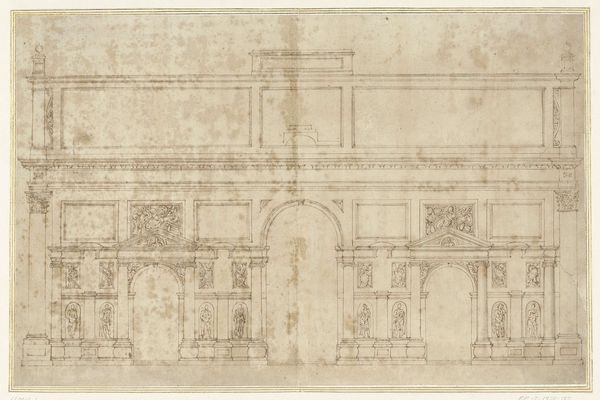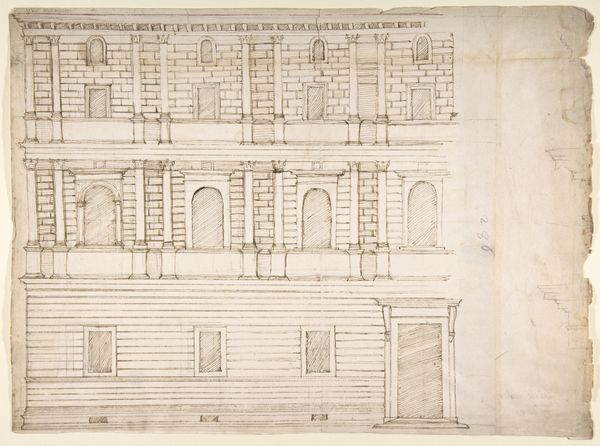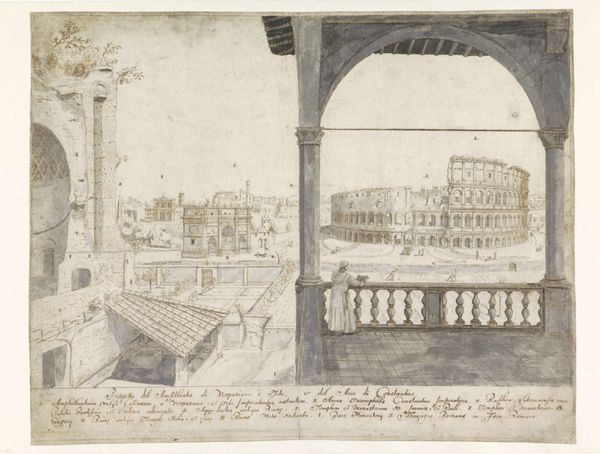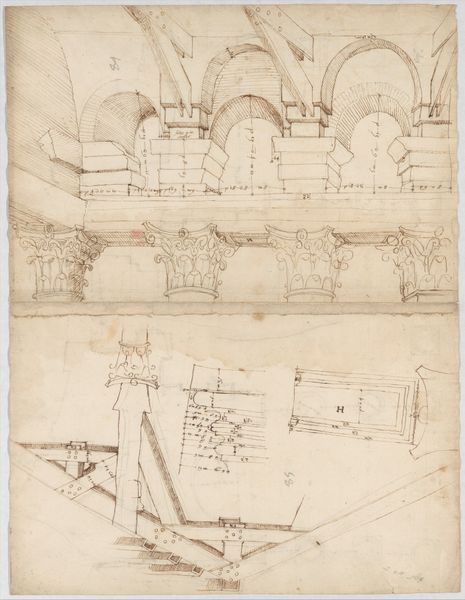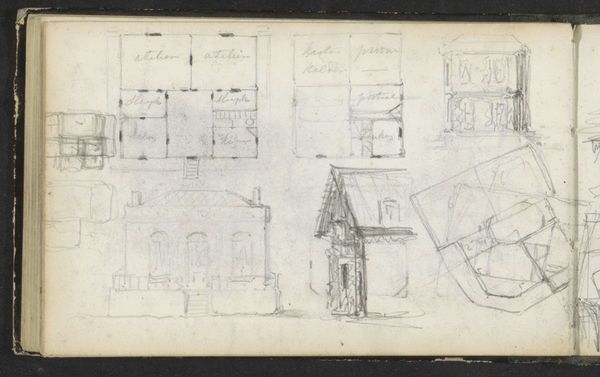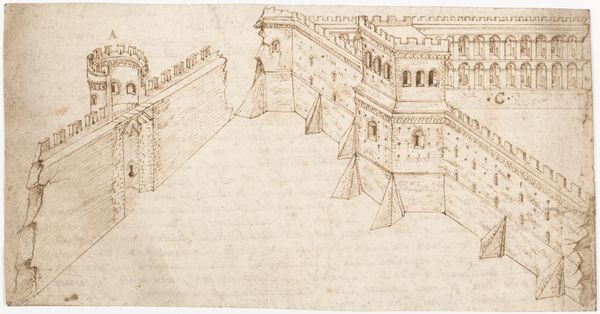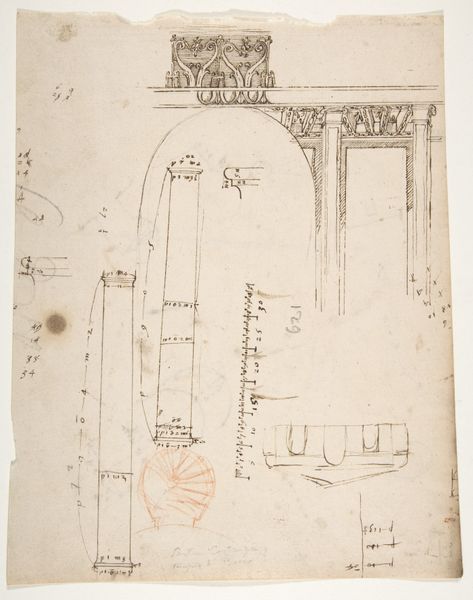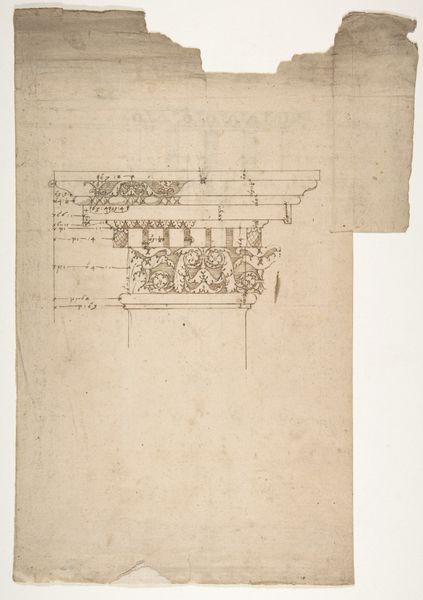
Recto: Temple Types: in Antis and Prostyle (Vitruvius, Book 3, Chapter 2, nos. 2, 3); Verso: Temple Types: Peripteral (Vitruvius, Book 3, Chapter 2, no. 5). 1530 - 1545
0:00
0:00
drawing, paper, ink, architecture
#
architectural sketch
#
drawing
#
pen sketch
#
paper
#
11_renaissance
#
ink
#
history-painting
#
italian-renaissance
#
architecture
Dimensions: Sheet: 6 1/8 x 10 1/2 in. (15.5 x 26.6 cm)
Copyright: Public Domain
This drawing, made in the early 1500s by the Sangallo family, uses pen and brown ink on paper to depict different types of temples described by the Roman architect Vitruvius. The Sangallos, a family of Italian architects and engineers, used the immediacy of drawing to record and interpret classical forms. The linear quality of the ink emphasizes the architectural structure, focusing on proportion, symmetry, and the precise arrangement of elements. The repetitive strokes create a sense of texture and depth, mimicking the stone and materials of actual temples. Drawings like this one were essential tools for architects, allowing them to explore design options, communicate ideas, and preserve knowledge of classical architecture. They reflect the Renaissance interest in reviving ancient forms. By studying and documenting these structures, the Sangallo family contributed to the architectural discourse of their time, blending scholarship with practical design. Paying attention to the materials, making, and historical context of such works helps us understand the intellectual and creative processes behind architectural innovation.
Comments
No comments
Be the first to comment and join the conversation on the ultimate creative platform.

